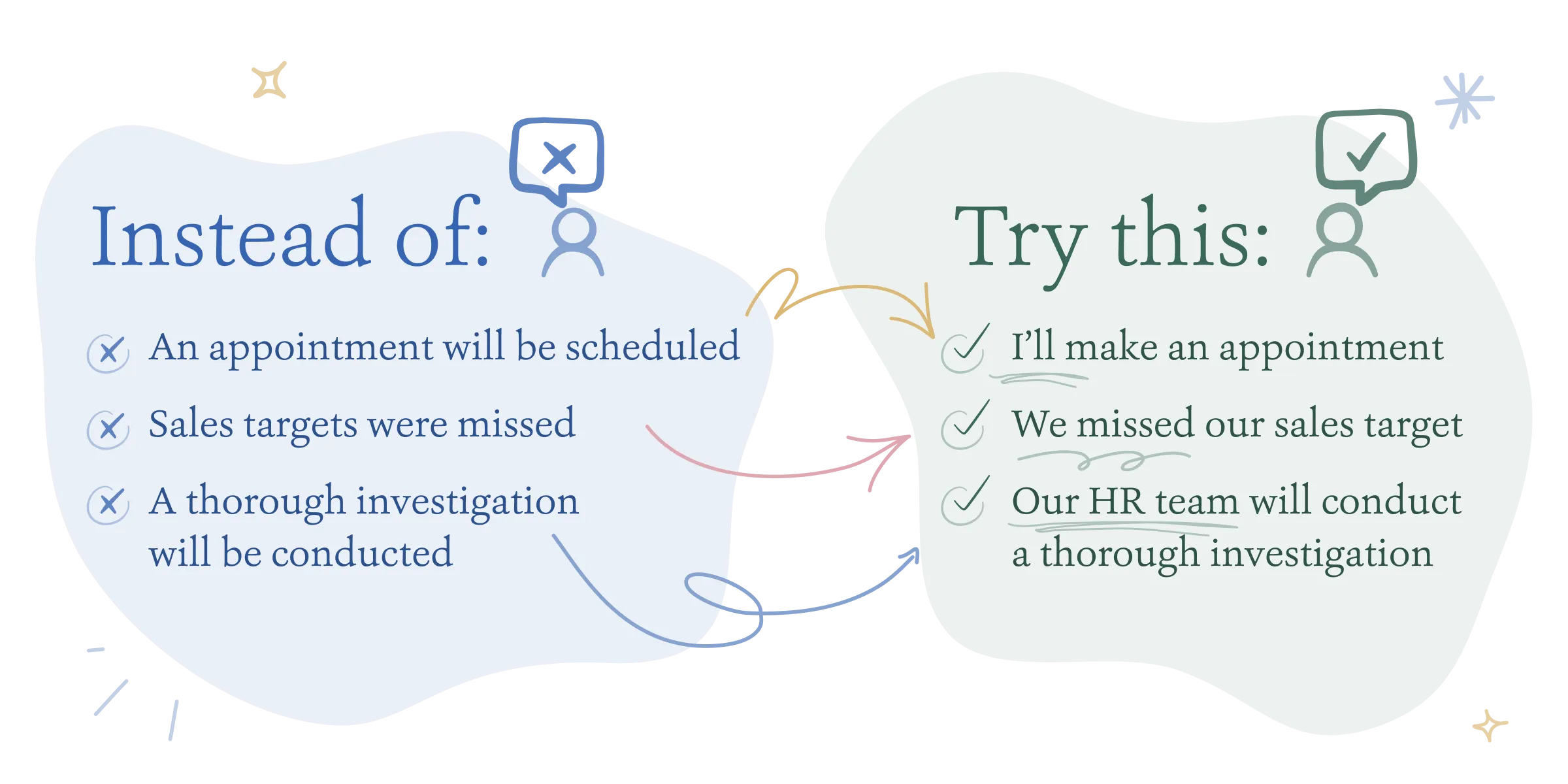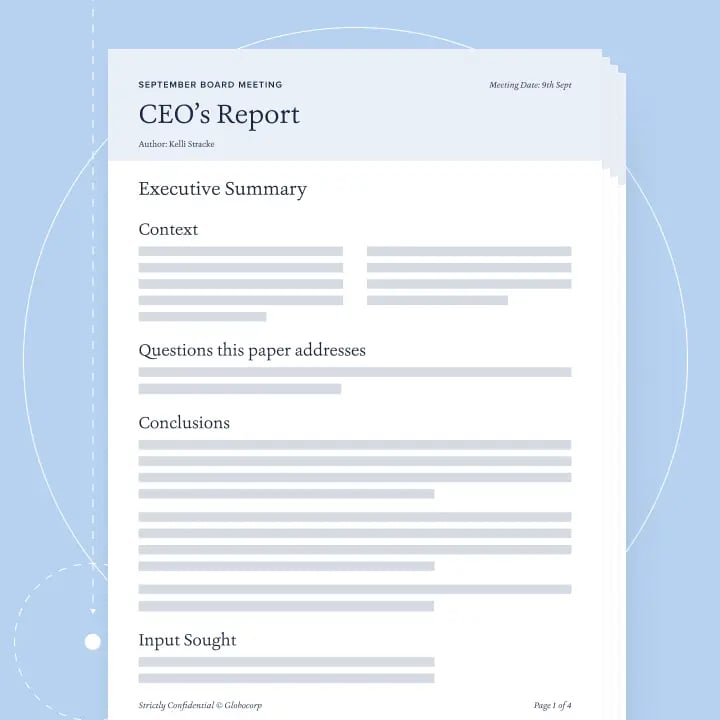This article is part of a series exploring great communication in business.
When you’re putting a plan in front of your boss, what convinces them to give you the green light — and the resources you need — to make it happen?
If your thinking is solid, chances are that it will come down to how you communicate it.
Effective communication is a powerful asset. It helps us get things done and it’s vital for building the collective intelligence that fuels enduringly successful businesses.
But, although communicating is something we all do every day, we’re surprisingly bad at it. According to research conducted by Grammarly and The Harris Poll, 72% of business leaders think their teams struggle with communication.
Sometimes that’s because we’re not clear, concise or direct enough for others to engage with what we’re trying to say. But other times they understand us all too well. They just don’t believe us.
Trust is the invisible foundation of good communication, and we notice it mainly when it’s absent. Think of the slipperiest politician you know. They may be articulate, but once you think they’re trying to hide something, you’re unlikely to listen to anything they have to say.
Deliberate deception is not the only way to lose trust. It’s all too easy for well-meaning people to cast doubt on their message unintentionally, by delivering it the wrong way.
Why don’t people trust what we’re saying?
The quickest way to undermine others’ trust in you is to distance yourself from what you are saying. When we speak, that’s hard to do. But when we have to write things down, as is often the case in business when we need to inform colleagues or ask for resources, it’s an easy trap to fall into.
When we sit down to write something important, something comes over us. We stop communicating normally and start communicating the way we think we’re supposed to. Our tone becomes formal. We try to sound clever and authoritative in the words we choose and the way we use them.
It’s only natural. Lawyers, academics, and authority figures do it all the time. But in business it can have the opposite effect to the one intended. It can come across as noncommittal or, worse, like you’re shirking responsibility and dodging accountability.
If colleagues sense you’re hiding out of view, they’re much less likely to buy into what you’re telling them, or to give you the support or resources you need.
Impersonality is a surprisingly easy mistake to make. Dame Mary Beard, the celebrated historian, admits that she suffered from the mistaken belief that “formality . . . was the stamp of authority” in the early part of her career — and it meant she struggled to produce anything that cut through.
In Beard’s case, it was less that her audience didn’t believe her, and more that her writing was just too dry. “A friend read something I had written and was brave enough to say, ‘This is probably right, but it’s boring.’ It wasn’t nice to hear, but it was true,” she recalls.
She went on to write her 600-page history of Rome, SPQR, “in my own voice . . . trying to interest the imaginary audience in front of me.” It worked — the book became a best-seller and propelled Beard onto prime-time television and the board of the British Museum.
“I started allowing myself to write in my own voice (not in what I came to call ‘big books by blokes about battles’ . . . style) . . . it worked.”
The secret sauce — for Beard, as well as other famously good communicators like Warren Buffett and Barack Obama — was that she found her voice. Their personalities and perspectives are all over their words, and people feel that they are speaking directly to them.
When writing has a voice, it’s more engaging and we’re more likely to trust the message and the person behind it.
How do I put my voice into my business writing?
A simple way to put yourself into your writing — in other words, to find your voice — is to use first-person, active language. That means saying “I’ll process your order,” rather than, “Your order will be processed.”
To avoid slipping into the passive voice, try using Monzo’s nifty “by monkeys” mantra. If you add ‘… by monkeys’ to the end of a statement and it still makes sense, you’re being passive. (Compare “A decision was made to close your account… by monkeys” with “I have decided to close your account… by monkeys.”)

Taking this approach has one obvious benefit — active sentences tend to be shorter than passive ones, and using the active voice makes for a more interesting and accessible read. But the bigger benefit is that it demonstrates ownership of the message, and that’s crucial for getting others to lean in and back your ideas.
How do you get everyone in the business writing this way?
It’s one thing to ask management to display their personality and sense of accountability in their internal reports. Getting everyone to do it, all the time — which is necessary if we want to tap into their collective intelligence — is another altogether.
This is particularly the case when people have bad news to share, which makes them understandably more likely to seek shelter in passive and impersonal language, sometimes without even realising it. Research by Board Intelligence has found that more than half (53%) of business leaders think management are too slow to own the message and display accountability when they bear bad tidings.
The problem is that this is precisely what we need management to do. As one director put it to us, “Until I hear the bad news, I’m not really listening.” Achieving the right balance between good and bad news is vital for getting people to listen and act on the insights and ideas that are being shared.
“Until I hear the bad news, I’m not really listening.”
~ FTSE 100 board member
To do this, management need a supportive editor at their side to tell them when they’re hiding from view or using a voice that doesn’t sound like their own.
Our AI-powered board and management reporting tool Lucia does just that, helping executives to inject personality into their writing and own their message.
First, its smart templating system prompts them to explore the positives and negatives of the topic they're writing about, by putting frameworks based on our Question-Driven Insight methodology at their fingertips. For example, they’ll be asked what went well and what went badly when reflecting on performance, or what concerns them most about the plan they’re putting forward.
Then, Lucia’s AI-powered “Candid” feature holds a mirror up to the report to help them work out if they’ve been sufficiently open with their responses — and, crucially, nudging them to address any imbalance while they have the chance.
“We’ve adopted the QDI Principle to help us think through the questions we should be answering and the storytelling behind our reports.”
~ Rachael Turk, Beazley (FTSE 100 insurer) — watch the video
With Lucia’s help, these principles can be applied to every board or management paper written by management – whether that’s a routine performance report, a CEO's report to the board, or a business case paper. When this approach is adopted at scale, and practised routinely, it quickly becomes a normal and natural part of the organisation’s culture to use your voice and own your message. Any new team member will quickly realise that their reports will stand out for all the wrong reasons if they don’t show accountability.
The result isn’t just reports that are easier and more interesting to read. It’s discussions that are more honest, forthright, and productive because they’re grounded in trust — and that’s the foundation that every business needs to move smart and fast.

A thinking and writing platform that helps you to write brilliantly clever and beautiful reports that surface breakthrough insights and spur your business to action.
Find out more


